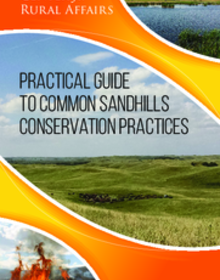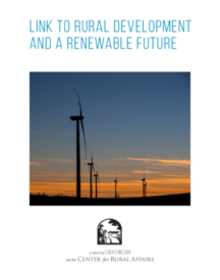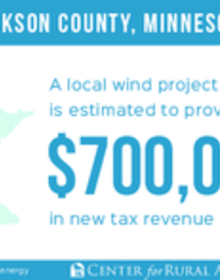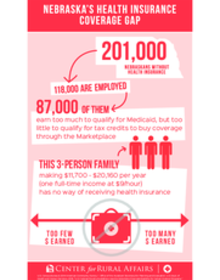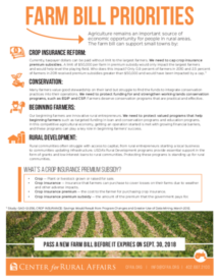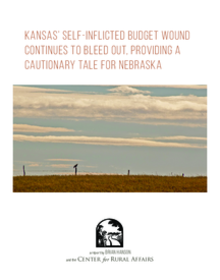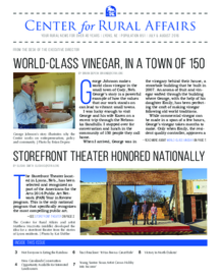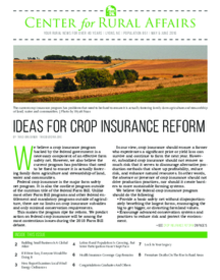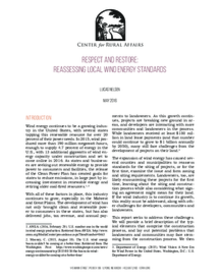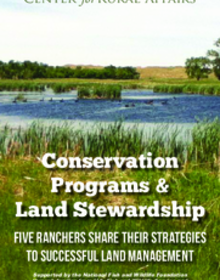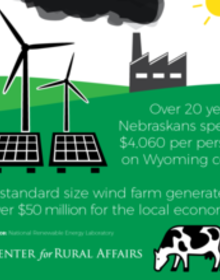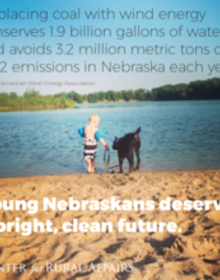We aren't afraid of the weeds. The people living in rural America deserve a serious and in-depth look at the issues and forces impacting their communities.
Throughout this edition, you will see this value in action: in Aida Olivas who selflessly gives to provide a future for fellow new Americans; in our stand against mega-mergers in the agricultural input market; in our efforts to improve the health care system and achieve balanced tax reform; and in the almost $2 million we’ve loaned to small businesses in the last year.
- Small Towns
This guide is a simple tool for landowners in the Sandhills region of Nebraska. It provides information on the most common conservation practices used by landowners in Nebraska’s Sandhills; the general benefits of such practices for landowners, grassland birds and other species; as well as some...
- Farm and Food
More than 2.6 million Americans are unable to access health insurance because they fall into the coverage gap - they make too much income to qualify for Medicaid, but too little to be eligible for tax credits that make private health insurance affordable. 19 primarily rural states have not closed...
- Policy
The United States continues to develop new clean and renewable energy resources to replace aging, carbon-emitting generating facilities. Much of the new renewable energy generation can be found in lightly populated rural areas. These locations often host significant resources for renewable energy...
- Policy
The Mower County, Minnesota, Board of Commissioners recently voted to dedicate revenue from local wind farms to road repairs and maintenance. The payment, likely $330,000 to $500,000 each year for a 10-year period, will contribute significantly toward fixing important infrastructure in the county...
- Policy
Small towns like Lakefield, Minnesota, provide a great example of how wind energy development can bring in new dollars to a rural community. In 2010, Lakefield had over 100 turbines planned or installed in the area. The turbines brought new construction jobs to the area and created permanent jobs in...
- Policy
Twin Groves consists of 240 turbines, stretches 12 miles east to west, and covers 46,000 acres. The project has a capacity of 398 megawatts, enough to power 120,000 homes. The wind farm not only generates renewable energy, it also generates money for the landowners. Wind turbines sit on 2.98 acres...
- Policy
Nebraska is one of 19 states that has not expanded Medicaid. The people who are most affected by this state government's decision to not expand Medicaid are the folks who fall into the “coverage gap.” The U.S. Census Bureau's 2014 American Community Survey estimates that there are about 201,000...
- Policy
Rural areas continue to experience new wind energy development, bringing benefits and challenges to these communities. To address the concerns of local residents and ensure that these projects are developed in the right way, local officials and regulators should focus on addressing key issues in...
- Policy
Throughout this edition, you will see this value in action: opportunities in business, farming and rural development; opportunities for new immigrants; opportunities for fresh, nutritious food; and even an opportunity to own your own land.
- Small Towns
As more rural communities are experiencing the development of new wind energy, it is important to not only acknowledge the challenges that exist, but the potential benefits that wind energy can provide to these communities. Sustainable, Renewable Power Without the need to purchase fuel for...
- Policy
Because the farm bill shapes the lives of rural Americans, the Center is committed to ensuring that rural Americans shape the farm bill. As we look toward a 2018 farm bill, here are some topics you can raise with your congress person in the coming year. If you would like to work with us in...
- Farm and Food
Kansas' Self-Inflicted Budget Wound Continues To Bleed Out, Providing A Cautionary Tale For Nebraska
Recently, some Nebraska legislators have been discussing plans to pair property and income tax cuts during the upcoming 2017 legislative session. Nebraska already faces a budget shortfall of over $350 million through the next budget cycle that ends in 2019, due to declining tax revenues resulting...
- Small Towns
Inside this issue: Victory in North Dakota; World-class vinegar, in a town of 150; Not everyone is eating the rainbow; and more!
- Small Towns
Inside this Issue: Ideas for Crop Insurance Reform, Building Small Business Is a Global Affair, and more.
- Small Towns
Wind energy continues to be a growing industry in the U.S. Several states are tapping this renewable resource for over 20 percent of their power needs. As growth continues, projects are breaking new ground. Developers are interacting with more communities and landowners in the process. While...
- Policy
In this special report, five ranchers share their strategies to successful land management using conservation programs and partnerships. Tree plantings, water placement, controlled grazing, prescribed fire, native species, you'll hear directly from the ranchers who tend the land they love. 1. Beel...
- Small Towns
Nebraska's energy future can be a bright one. Nebraska Public Power District (NPPD) can choose to invest in clean, sustainable energy options that grow our communities.
- Policy
Nebraska's energy future can be a bright one. Nebraska Public Power District (NPPD) can choose to invest in clean, sustainable energy options that grow our communities.
- Policy
Nebraska's energy future can be a bright one. Nebraska Public Power District (NPPD) can choose to invest in clean, sustainable energy options that grow our communities.
- Policy



